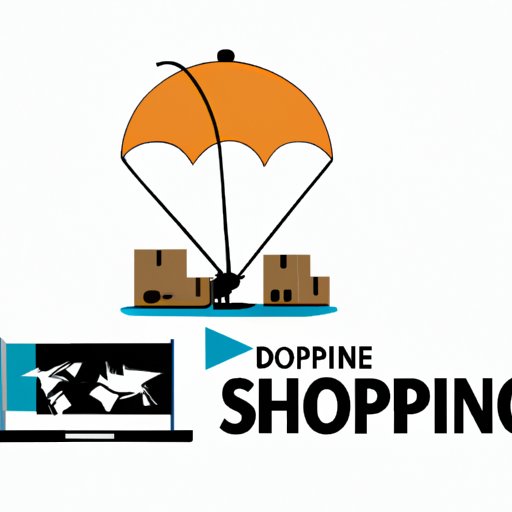Introduction
Starting an online business can be daunting. However, with the right guidance and resources, you can be on your way to becoming a successful entrepreneur. Drop shipping is one of the most popular eCommerce models for those looking to get started in the industry. In this comprehensive guide, we’ll explore what drop shipping is, the potential benefits of starting a drop shipping business, and the steps you need to take to get your venture off the ground.
What is Drop Shipping?
Drop shipping is a method of retail fulfillment where the seller does not keep any inventory in stock. Instead, orders placed by customers are sent directly to a third-party supplier who then ships the product directly to the customer. The seller only pays for the items when they are sold and shipped, eliminating the need for costly overhead expenses such as warehousing and storage fees.
Benefits of Starting a Drop Shipping Business
Starting a drop shipping business has numerous advantages. For starters, it requires little capital to get started since there is no need to purchase inventory or rent storage space. Additionally, since the products are shipped directly from the supplier, sellers do not have to worry about packaging and shipping, making it a much more streamlined process. Finally, with drop shipping, sellers have access to a wide range of products from different suppliers, allowing them to customize their selection and offer customers a larger variety of items.
Research the Market
Before embarking on your drop shipping journey, it’s important to conduct market research to identify popular products and analyze your competitors. This will help you determine what products are in demand and which ones are already being sold by other businesses. It will also give you insight into pricing structures, marketing tactics, and customer service practices.
Identify Popular Products
It’s essential to know what products are trending and in demand. To do this, you’ll need to look at various sources such as Google Trends, Amazon Best Sellers, and eBay Hot Items. These tools will provide you with valuable data that can be used to inform your product selection.
Analyze Competition
Once you’ve identified popular products, it’s time to analyze the competition. Take a look at their websites, read reviews, and pay attention to the marketing strategies they use. This will give you an idea of what works and what doesn’t, helping you create an effective strategy for your own business.
Select a Niche
Having researched the market, it’s time to select a niche. This will help you narrow down your product selection and focus on specific items that are likely to be popular with customers. You should also consider branding opportunities, such as creating a unique logo or slogan to make your business stand out from the competition.
Find Suppliers
Once you’ve settled on a niche, it’s time to find suppliers. You’ll want to source reliable suppliers who offer competitive pricing and quality products. Take your time researching different companies to ensure that you’re getting the best deal. Additionally, evaluate their pricing structure so you can accurately calculate your profits.
Set up Your Website
Now that you’ve identified your suppliers, it’s time to set up your website. This is the foundation of your business, so you’ll want to make sure it looks professional and attractive. Develop clear product descriptions and high-quality images to make your products stand out. Additionally, you’ll want to integrate secure payment methods such as PayPal or Stripe to ensure customer data is safe and protected.
Develop a Payment System
In order to accept payments, you’ll need to develop a payment system. This may involve integrating payment gateways such as PayPal or Stripe, or using a third-party payment processor. Whichever option you choose, make sure you’re complying with all applicable laws and regulations and protecting customers’ data.
Promote Your Business
Now that your website is up and running, it’s time to start promoting your business. Utilize social media platforms such as Facebook and Instagram to reach potential customers. Additionally, leverage SEO techniques to boost your ranking in search engine results pages. Finally, explore other digital marketing techniques such as content marketing or email campaigns to drive traffic to your site.
Monitor Performance
Once your business is up and running, it’s important to monitor its performance. Track sales and customer feedback to gauge how well your products are performing. Additionally, analyze metrics such as website traffic or conversion rates to identify areas for improvement. By monitoring performance, you can stay ahead of the competition and ensure your business remains profitable.
Conclusion
Starting a drop shipping business is a great way to break into the eCommerce world. By following the steps outlined in this guide, you can get your venture off the ground and on its way to success. Research the market, select a niche, source reliable suppliers, set up your website, develop a payment system, promote your business, and monitor performance. With the right guidance and resources, you too can become a successful drop shipping entrepreneur.
(Note: Is this article not meeting your expectations? Do you have knowledge or insights to share? Unlock new opportunities and expand your reach by joining our authors team. Click Registration to join us and share your expertise with our readers.)
